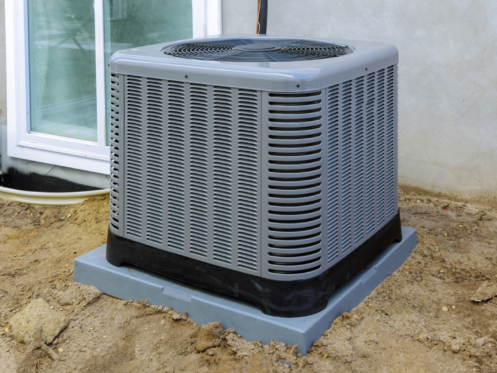After deciding it’s time for a HVAC replacement or looking to install a new HVAC system, size is everything. The size of your HVAC system needs to be formulated to fit the heating and cooling requirements of your house. If you choose one too small or too large then it will not be able to meet your needs. The right system size will perform more efficiently to save you money without sacrificing your comfort. Furthermore, don’t forgo sizing HVAC system thinking your old HVAC unit is the correct size. With this in mind, call your local HVAC technicians to make an inspection. They will calculate your home’s needs and ensure your replacement is the correct size. In addition, they can also check for any air leaks to further improve your system’s efficiency.
How to Know What Size HVAC Unit You Need
The first thing you need to know is: how many British Thermal Units (BTUs) are needed to cool and heat your home. In our area, 25-30 BTU for every square foot of space is the typical calculation for figuring out how many you need. However, there are other factors to consider that will also affect how much power your system needs such as:
– Square footage/room measurements
– Layout of the home and number of windows
– Heat-generating appliances
– Natural shade or sunlight/outdoor landscaping
– Construction materials
– Quality/amount of insulation and ductwork
– Number of people using the space
Load Calculation
A manual J calculation is a way to assess the energy efficiency and usage of your home and system. At Satterlee, our HVAC technicians use Lennox Pros load calculation, a method similar to manual J, as a technique to carefully and accurately calculate a home’s heating and cooling needs. This method analyzes all of the factors that affect your specific situation and suggests the optimum HVAC system size.
Sizing HVAC System: Consequences of Choosing the Wrong Size
After calculating the requirements needed, you might find your calculations are inbetween sizes. If this is the case, it’s recommended to go for a bigger size. The extra power helps ensure your system can handle extreme temperatures. However, the unit shouldn’t be overly powerful for your home as it can heat/cool too quickly which can cause issues like:
- Unable to dehumidify the space due to reaching the right temperature too quickly and shutting off
- Increased risk of mold inside the unit and ductwork from the excess moisture
- Uneven temperatures throughout the house
- higher energy bills from short cycling (frequent starts and stops)
According to Trane, it’s recommended to choose a size that is under 15% of the BTUs needed for cooling and under 40% for heating. On the other hand, if you are considering a heat pump system which handles both, the recommendation is under 25%.
Satterlee’s Licensed HVAC Professionals
Consulting with a licensed HVAC professional will help ensure you’re getting the best system for your specific needs. Considering a HVAC replacement or installing a new unit? Contact us today! We will make an assessment of your home and discuss the options that will benefit you the most. Not only will you feel knowledgeable about your new HVAC unit, but feel confident about your investment as well.


